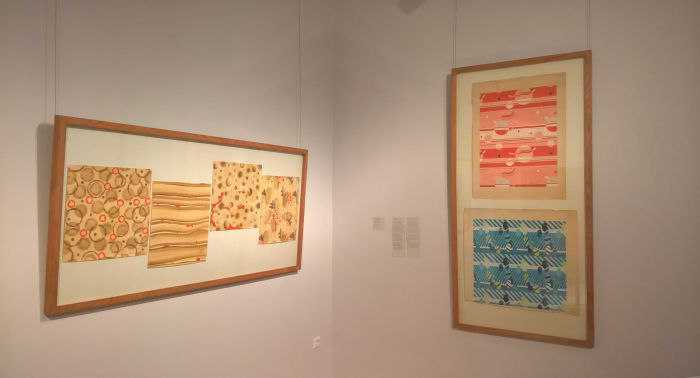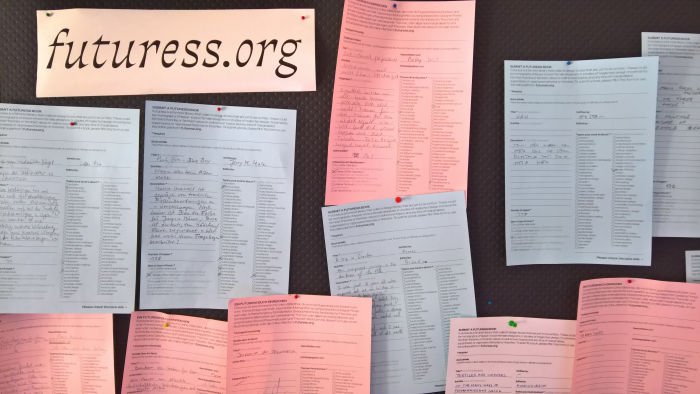It is highly unlikely any 18th century banquet in Dresden's Schloss Pillnitz would have been graced by a cake that came close to matching the Baroque grandeur of the location, certainly no cake that would have had a richness, plenitude or vitality to match; cake as it existed in the 1700s being a much flatter, breadier, monotone, delight, one which we today would barely recognise as cake, but which then was understood as cake, the whole cake and nothing but cake.
Then additions were made to the cake......
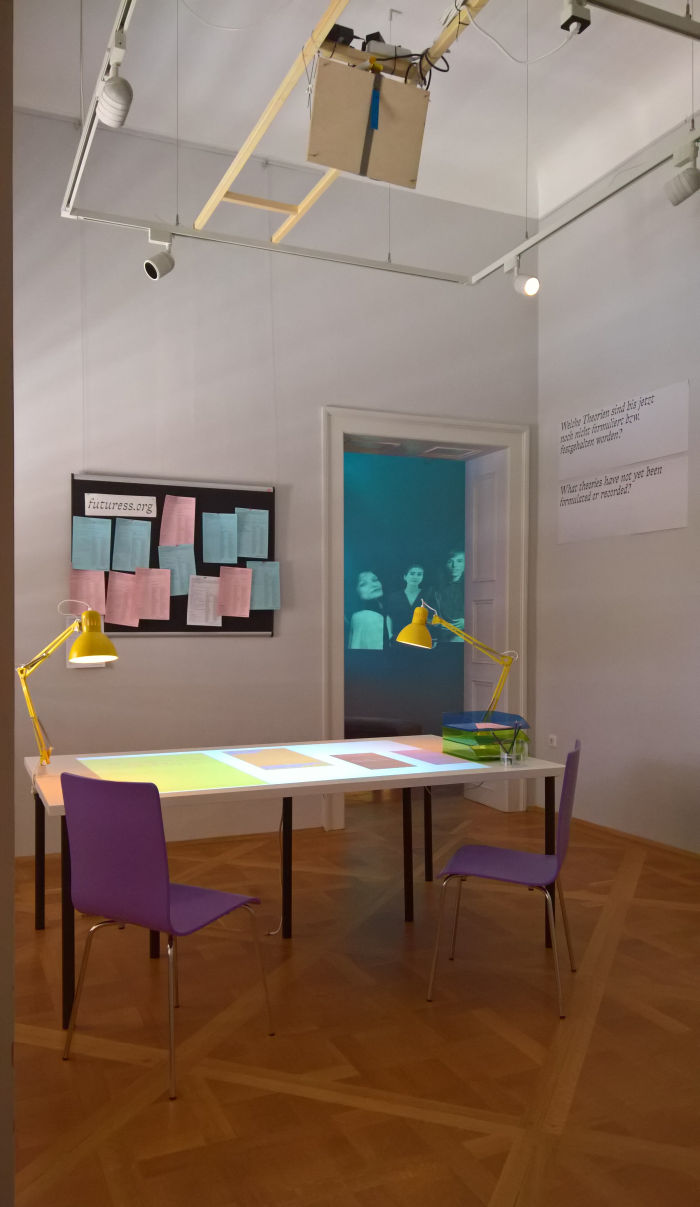
The cake of the exhibition title is not a celebratory sponge, but that of our contemporary creativity, of understandings of contemporary culture, for all understandings of contemporary architecture and design, and a cultural cake which has occupied the Kunstgewerbemuseum Dresden for some time, for all in a gender context: the exhibition Against Invisibility discussing it historically via the biographies of 18 forgotten/invisible female designers who cooperated with the Deutsche Werkstätten Hellerau in the late 19th/early 20th centuries, and an exhibition which not only allowed for a realigning of the popular, accepted, history, of the Deutsche Werkstätten Hellerau, but also the role of female creatives in the development(s) of art, architecture and design that occurred in the late 19th/early 20th centuries. A discussion the symposium A Woman's Work subsequently brought into the today with reflections on how the work of female creatives past and present is represented, mediated and received in contemporary society, discussed if you will the visibility of contemporary female creatives. Add to the Cake continues that discussion into the future.
To this end the exhibition curators, Foreign Legion a.k.a Vera Sacchetti and Matylda Krzykowski, invited half a dozen individuals/collectives to reflect on the current reality, the path we've taken to our current reality and consider how that path could be constructed and routed to enable increased, and for all sustainable, future visibility of and for female creatives; to consider how we can ensure the contributions of female creatives are part of the cake, understood as being part of the cake, and thereby helping to create a more probable, and palatable, confection.
And considerations which tend to underscore that in terms of our cultural cake, adding isn't necessarily about supplementing, or certainly not about supplementing alone, but is also about de-shrouding. That the cake we have is much richer, more plentiful and highly vital than it appears. But through the skewed perspective from which we invariably consume it, we can't appreciate it in its full grandeur.
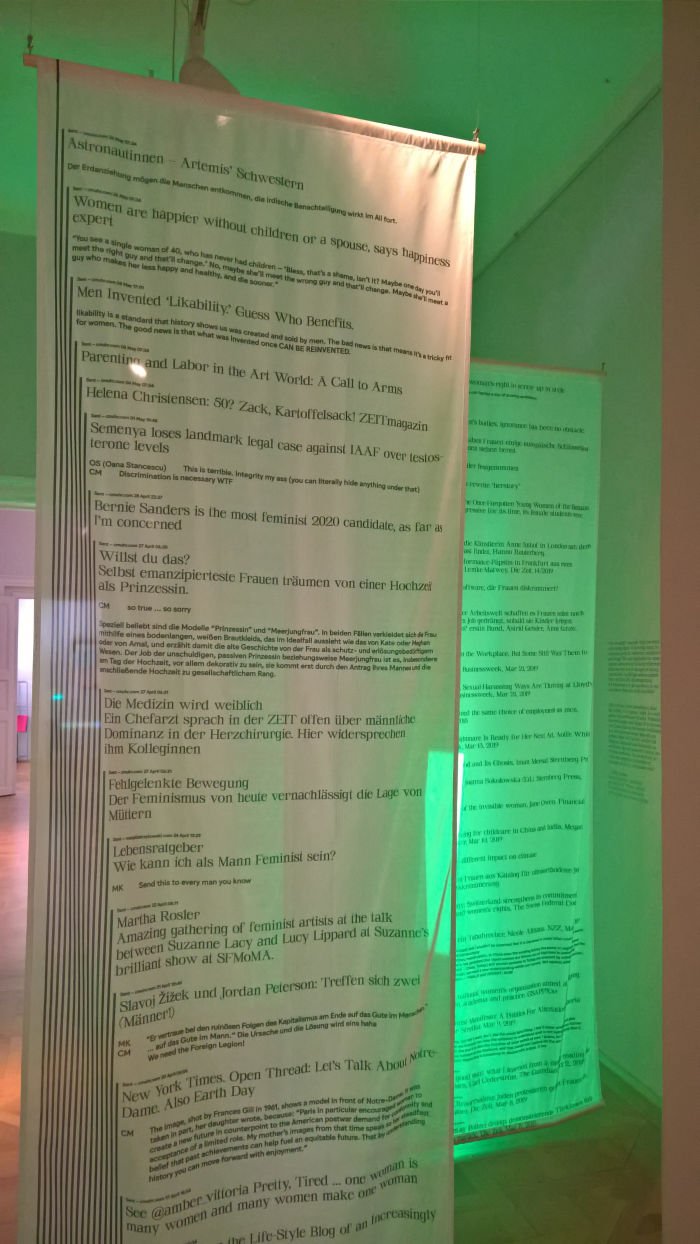
As discussed in context of both Against Invisibility and also A Woman's Work, our skewed perspective on contemporary creativity is, in many regards, an historical failing, for all, and amongst many,many, other reasons, the fact that contributions of female creatives past either weren't, or weren't properly, recorded and that consequently the (hi)story of, and to stay in the principle theatre of Add to the Cake, architecture and design is very much a (his)story. And a popularly unchallenged (his)story to boot. Improving our perspective of the cake, allowing us a fuller, wider, deeper, cultural vista, involves challenging that (his)story, including rectifying the lack of female narratives in the (hi)story of architecture and design, rectifying the fact that the (hi)story of architecture and design tends to be one written by men about men.
And a state of affairs tackled in the project Futuress by graphic designer Ann Kern and the Swiss collective common-interest a.k.a Corinne Gisel and Nina Paim, and which aims to create, as they phrase it, "a feminist library of blind spots, untold stories, and missing narratives within design history and theory". And a future library which currently includes propositions such as, and amongst others, What Was Needed, Mary ‘Molly’ Gregory and the wood workshop at Black Mountain College; Arabiyyat. Arab female leaders of design education in the MENA region; Futuriste. The experimentation on "parole in libertà" of the women of Futurism; or Gertrud Kleinhempel: Designer and teacher. From furniture and textile design to the first female professor of the Prussian State. Whereby we suspect the last one may already be in production. We no know. We guess. And an aspirational library to which all are invited to contribute suggestions.
Whereby, and while in no way discounting the value of any books such a project may inspire, alone the brainstorming of possible themes, subjects and titles creates movement towards improving the general, rough, situation. Mary ‘Molly’ Gregory? Arab female leaders of design education? Women of Futurism? Gertrud Kleinhempel? OK, thanks to Against Invisibility Gertrud Kleinhempel is on our radar, but a lot of the themes and persons suggested on the virtual Fortress bookshelf ain't. But thanks to the virtual Fortress bookshelf, soon could be. Similarly, while many of the suggestions for books considering not instantly obviously gender loaded themes from a gender/female perspective would, if ever published, help expand the narrative; from the titles alone there is enough to stimulate your own research. The answers, the missing ingredients of and layers from our cake, are out there.
Improving our communal perspective of the cake involves however not only challenging history, but being more receptive to contemporary messages; a contemporary reception that is, arguably, often, the result of historic processes and prejudices, yet which must be tackled in the today if it's not to continue into tomorrow. And a necessity approached by the newsletter For Your Information (FYI), a project initiated by Stuttgart based design researcher Chrissie Muhr, visualised in Dresden in a cooperation with Hamburg based graphic designer Ji-hee Lee, and which collates stories and quotes harvested from contemporary media which indicate, occasionally betray, attitudes, perceptions, understandings of females in contemporary society, which highlight areas of existing gender prejudice, inequality, bias, in contemporary society, and which thereby, as the exhibition notes, asks "Do you understand your reality?" A question applicable to most of us in a much wider sense, certainly to many a British islander, and one which, as posed in FYI underscores the importance of language in establishing and reinforcing social and cultural norms, in influencing our understanding of the world around us. And that reading is also an act of interpretation, that words aren't fixed, natural, neutral, realities but subject to not only to an abstract external definition but variation, evolution and flux.
And not just spoken language is subject to variation, evolution and flux, but also the signs and symbols that accompany and inform our daily lives. Signs and symbols which, and summarising to the point of inaccuracy, Anja Kaiser and Garrett Nelson propose corrupting, deliberately destabilising, to create a language of activism through which to counteract and deconstruct existing understandings and enable the imagining, and ultimately attaining, of a new, previously intangible, future of gender parity and fairness.
And so does that mean that one must always consider everything from a gender perspective?
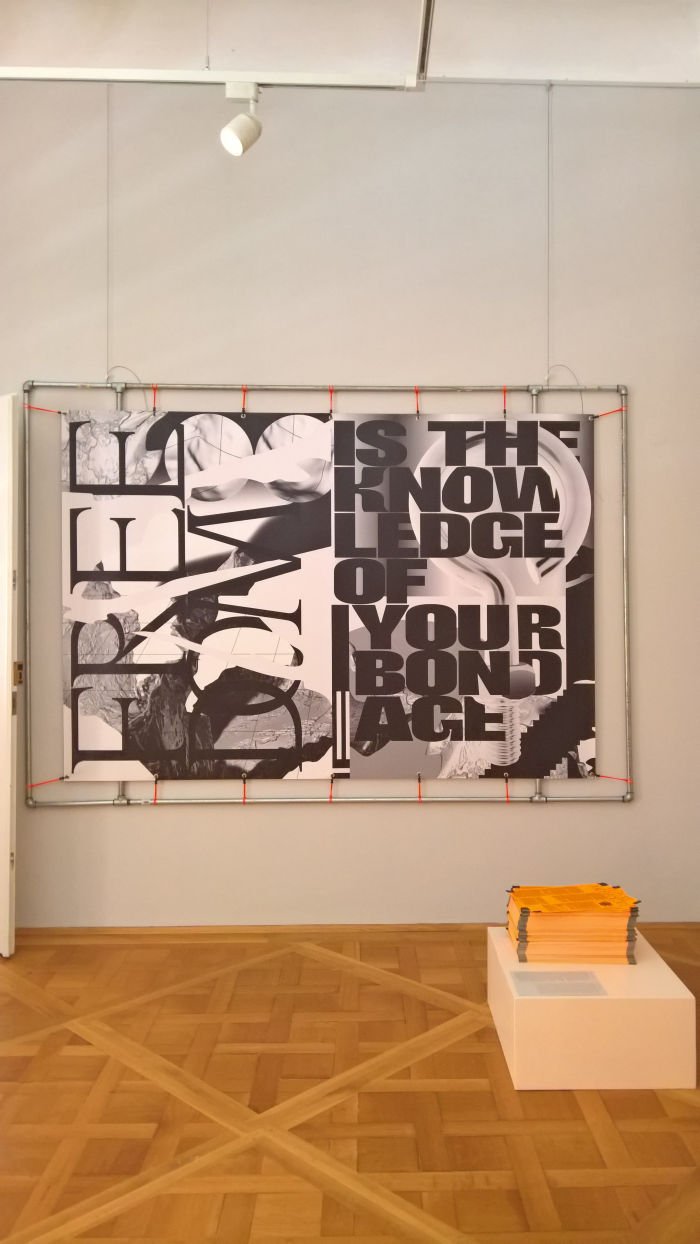
In principle yes.
And not just gender. For, and as we all learned from Friedrich von Borries. Politics of Design. Design of Politics at Die Neue Sammlung Munich, one must consider everything from a gender, race, religion, sexuality, colonial, authoritarian, etc, etc, etc, perspective.
However to analyse every object and every situation from a myriad of perspectives, many of which would invariably lead to nowhere, or at least nowhere conclusive, unequivocal, would suck all the fun out of life. And these days there isn't that much going spare, we need to be careful with that which we still have.
And so we have professional practitioners, individuals and collectives specialised on particular aspects and who on the one hand act as filters, who allow for the highlighting of a few exemplary, important, relevant objects/situations and who on the other, through their deliberations and research are, more or less, charged with proposing the way forward. Practitioners such as those featured in Add to the Cake.....
.....not that having professional practitioners filtering for us absolves us from responsibility. Far from it people!
The onus is still very much on us all individually and collectively. Such filters are an aid, are there to help us develop an awareness that that which is before us may not be all it appears, may be distorted, partial or just plain wrong. And there to help us develop a more acute awareness of the world around us, and thereby to learn to better question the rationality and probability of any given situation/object. To be more active, pro-active, in our interaction with the world.
Add to the Cake is unapologetically about questioning such from a gender perspective, but not in an arrogant way, as an exhibition it is very much aware that there are other inequalities, biases and unfairnesses in the mix, and thereby an exhibition, and by extrapolation a contemporary society, that should be viewed and considered in context of what Zürcher Hochschule der Künste Professor Sarah Owens described during A Woman's Work as the "dominant" and the "marginalised". Here it is dominant/marginalised in terms of gender, it could be one of numerous other aspects. And in architecture, design or just as easily in art, sport, politics, banking, IT, music, etc, etc, etc...
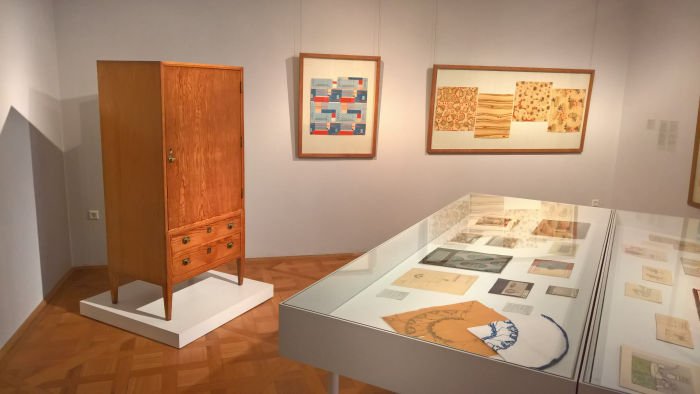
Presented in the west wing of Schloss Pillnitz's Wasserpalais, Add to the Cake pleasingly and logically employs the architecture to give each of the projects their own space and thus allows them to exist as independent chapters in a cohesive composition; starting with an extension of Against Invisibility in the form of two further forgotten/invisible Deutsche Werkstätten Hellerau designers, Irmgard Harras and Erna Sandig, and then moving over, in addition to those projects mentioned above, Call for Collective Representation by Gabriel A. Maher and Ina Weise which considers how a greater collective visibility and greater public cooperation could transform understandings of female creatives both amongst creatives and also the wider public, Pinar Demirdag from artist duo Pinar & Viola's reflections on her own personal journey and a collection of so-called Visual Fictions, answers to the question, What happens when we have added to the cake?, as submitted by some 20+ creatives.
A spacious and varied exhibition Add to the Cake is however one which does involve a lot of the language of the art/design theoretician, and predominately that type of strictly, unerring, professional vernacular jargon we don't find particularly helpful in such presentations. By which we don't mean one should dumb down, far from it, always keep the arguments precise, structured, grounded and away from easy simplifications or generalisations, but in more accessible language. We passionately believe that if cultural partitioners only talk in the registers, vocabularies, argots they use in their professional bubbles, a practice of which architects are the absolute worst offenders, you very quickly lose the lay. And ultimately its us lays you practitioners need to reach. See above ⇑ ⇑ ⇑
For our part we're prepared, and happy, to take our time to wallow through any text, however long that takes, and from Add to the Cake we're still wallowing, still struggling with one or the other term, not least with "liminal segue". A concept we fear we may never understand. Yet doubt the absence of an understanding of the "liminal segue" will adversely affect the future courses of our lives. But while we are happy to struggle with such, many others aren't, and when we were at Schloss Pillnitz, a lot didn't. Yes, museum visitors rarely give any exhibition the time they should, and that which it deserves; but where an exhibition relies to the greater part on texts, those texts need to be every bit as accessible, comprehensible, instantaneous, as an object would be. From the Belgian leg of our 2019 #campustour we noted from LUCA Genk that language is only useful if it allows one to communicate, if not it can (potentially) lead to isolation, tension and mistrust, from Dresden we'd add, and potentially also lead to invisibility through a popular indifference: If I don't understand something, it can't be relevant for me.
And that which is presented in Add to the Cake is relevant. For us all.
Not only are we all, to varying degrees, consumers of contemporary culture, and therefore should, must, be every bit as aware and conscious of the culture we consume as of the food, drink and clothing we consume; but we all share a joint responsibility for the condition of contemporary, and future, society, and that, as we all know, is a complex interplay of political, economic, environmental, technological, social, et al, factors, including cultural expressions and cultural responses. Or put another way, we all share a joint responsibility for the cake and so must question if the cake we have before us is cake, the whole cake and nothing but cake. Or if there is anything one should add.....
Add to the Cake: Transforming the roles of female practitioners runs at the Kunstgewerbemuseum, Schloss Pillnitz, August-Böckstiegel-Straße 2, 01326 Dresden until the 2019 season ends on Sunday November 3rd.
Full details can be found at https://kunstgewerbemuseum.skd.museum and at www.foreign-legion.global
